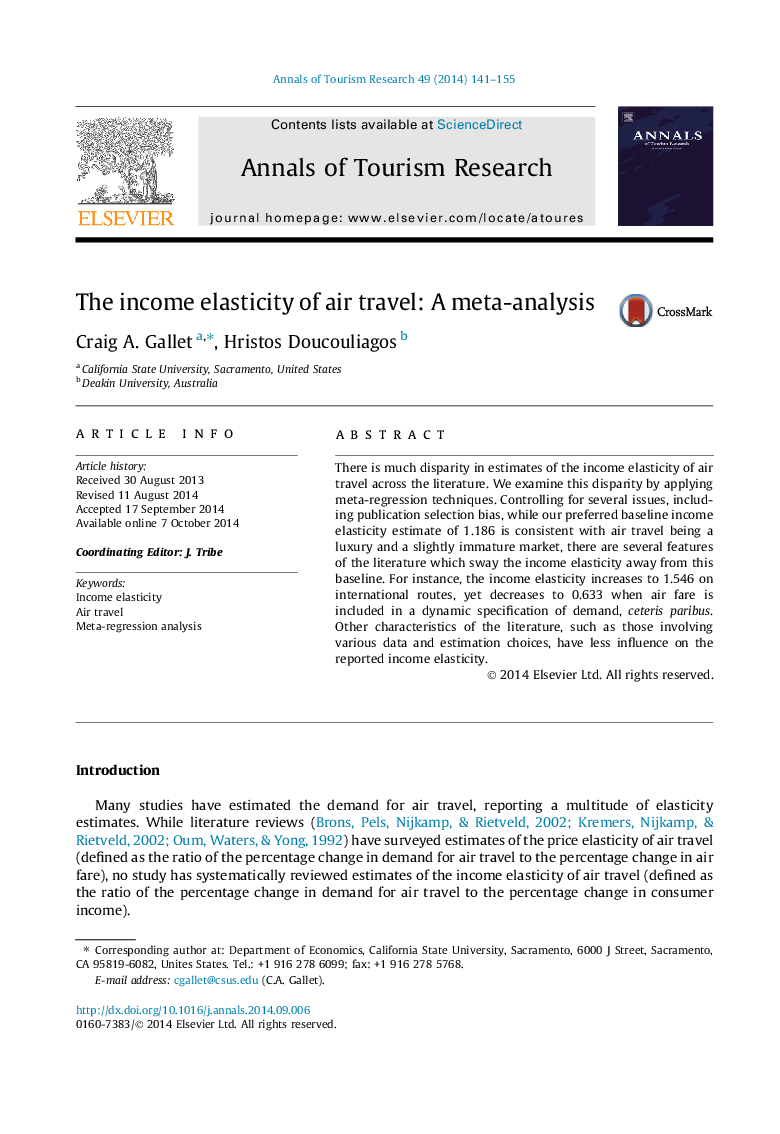| Article ID | Journal | Published Year | Pages | File Type |
|---|---|---|---|---|
| 1007055 | Annals of Tourism Research | 2014 | 15 Pages |
•We use meta-regression techniques to quantity the income elasticity of air travel.•Our meta-regressions control for many issues, including publication selection bias.•The baseline income elasticity equals 1.186.•Several features of the literature sway the income elasticity from its baseline.
There is much disparity in estimates of the income elasticity of air travel across the literature. We examine this disparity by applying meta-regression techniques. Controlling for several issues, including publication selection bias, while our preferred baseline income elasticity estimate of 1.186 is consistent with air travel being a luxury and a slightly immature market, there are several features of the literature which sway the income elasticity away from this baseline. For instance, the income elasticity increases to 1.546 on international routes, yet decreases to 0.633 when air fare is included in a dynamic specification of demand, ceteris paribus. Other characteristics of the literature, such as those involving various data and estimation choices, have less influence on the reported income elasticity.
